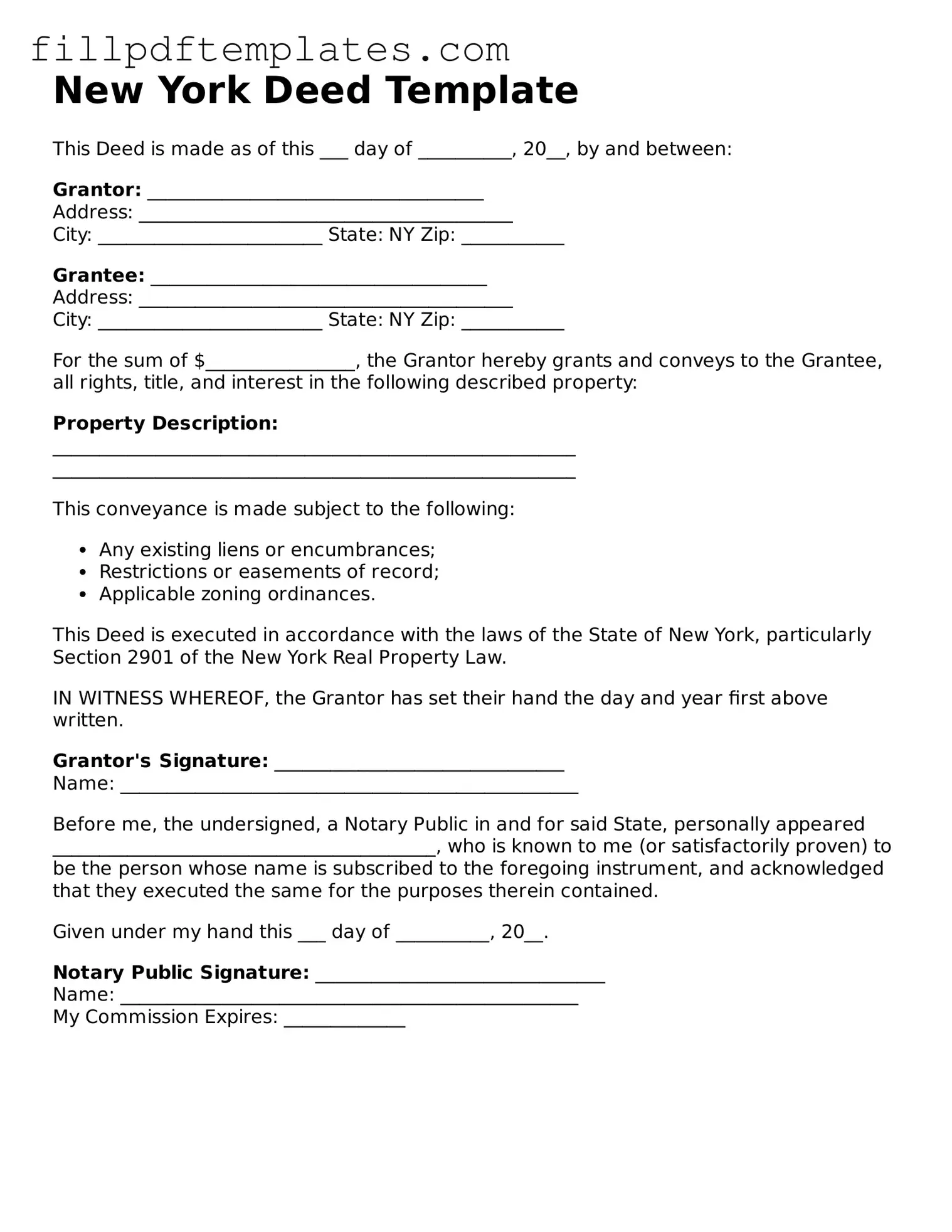New York Deed Template
This Deed is made as of this ___ day of __________, 20__, by and between:
Grantor: ____________________________________
Address: ________________________________________
City: ________________________ State: NY Zip: ___________
Grantee: ____________________________________
Address: ________________________________________
City: ________________________ State: NY Zip: ___________
For the sum of $________________, the Grantor hereby grants and conveys to the Grantee, all rights, title, and interest in the following described property:
Property Description:
________________________________________________________
________________________________________________________
This conveyance is made subject to the following:
- Any existing liens or encumbrances;
- Restrictions or easements of record;
- Applicable zoning ordinances.
This Deed is executed in accordance with the laws of the State of New York, particularly Section 2901 of the New York Real Property Law.
IN WITNESS WHEREOF, the Grantor has set their hand the day and year first above written.
Grantor's Signature: _______________________________
Name: _________________________________________________
Before me, the undersigned, a Notary Public in and for said State, personally appeared _________________________________________, who is known to me (or satisfactorily proven) to be the person whose name is subscribed to the foregoing instrument, and acknowledged that they executed the same for the purposes therein contained.
Given under my hand this ___ day of __________, 20__.
Notary Public Signature: _______________________________
Name: _________________________________________________
My Commission Expires: _____________
